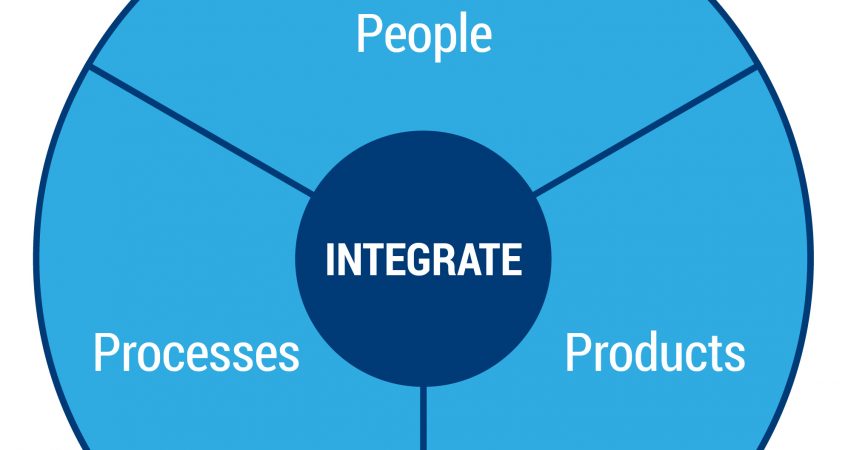People who advance to the leading edge of performance have organizational mastery. They are driven to be total systems thinkers, and they integrate people, products, and processes. Individuals with organizational mastery exhibit an understanding of how their enterprise works and how different factors influence one another. They have knowledge of systems and how all the moving parts work together as part of the whole. Also, they talk about the complete value chain including suppliers, inputs, processes, outputs, customers, and outcomes. So, where do great leaders begin when it comes to organizational mastery?
One person taking one action can have organization-wide value. The first step to unleashing the potential of individuals to improve your total organization is to get some concept of your enterprise as a working system, a total system. Various models exist to help portray an enterprise in this way. They all tease out, in one way or other, distinct parts of the whole system providing a starting point for how one change in one area can affect people and processes throughout the organization.
Over time in many industries, the SIPOC model has successfully guided assessment activities in full-throttle organizations. Its name is an acronym drawn from the elements it uses to define an organization: suppliers, inputs, processes, outputs, and customers. But SIPOC is not the only model. Different models are helpful in different ways. In light of the research in new working environments, it’s interesting how total systems models emphasize a central role for people. SIPOC, for example, is largely about human beings. It and other models reflect how a total organization can improve when one person or group gets smarter, reaches a benchmark, or employs a bright innovation.
When we see how one person can have organizational impact and how one task can have enterprise-wide impact, we can start to turn the formula around. Whenever we face a large-scale problem, we can begin by looking for changes that will solve many problems (or seize many opportunities) across the whole organization. That’s why it’s important to remember the special value of the human element in total systems. The human level is where continuous improvement occurs in organizations. Our role as leaders is to draw on each person’s fluency in his or her area of the total system in order to improve the whole.
Consider suppliers. Their performance has profound impact on enterprise success. Their first-hand experience of an organization’s work effectiveness can provide feedback that moves from the point of contact all the way to affecting choices in product design or directions in service expertise. Suppliers are particularly central as strategic partners—and sources of market information. These key partners can actually bring their expertise to bear and create solutions to support success, if we take the time to explain to them our business needs and goals. This is total systems thinking in action. Have you talked with and listened to your key suppliers lately?
Customers are another great source for ideas to improve products or services. But many organizations don’t have a sufficient dialogue in place to discover ideas from customers’ unique vantage points. The same goes for employees and contractors. Add to these the other stakeholders and people who interact with the organization in any way, from investors and media to the community-service groups with whom staff may volunteer.
Each of these stakeholders has something to say worth hearing. They offer a comprehensive image of the total system at work. Here is where the quality of leadership is tested, even reworked. To begin, it’s important to listen with an open mind to good and bad reviews.
Effective leaders see the big picture. They grasp how actions by one can affect many others. They also inspire others to think beyond their current domain of responsibility and gain a working knowledge of the greater system in which they work. This way, leaders inspire a total system mindset in others. As a first step, I suggest getting a grip on your total system and beginning to understand the unique human factor that can create solutions for your organization’s growth and change.
Where have you or how have you seen systems thinking in action contribute to success?

